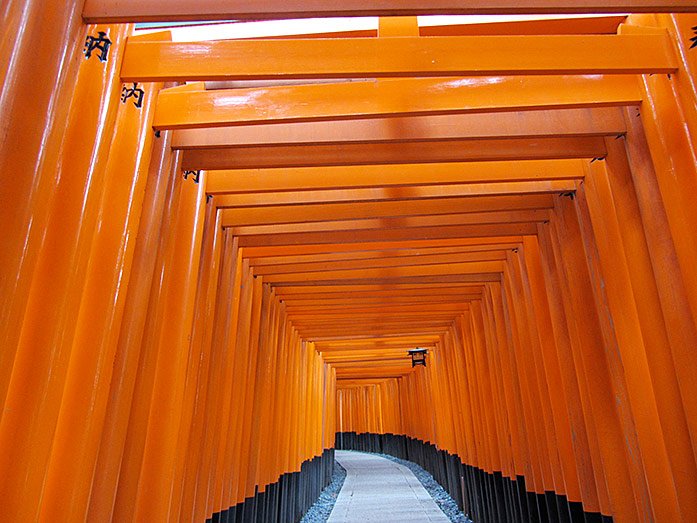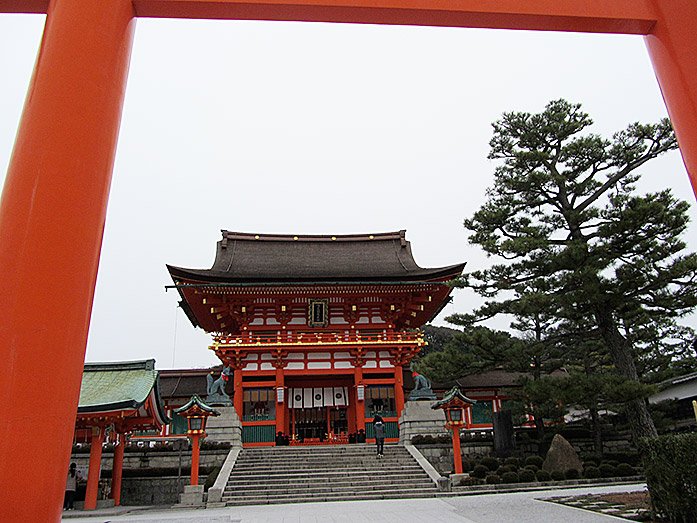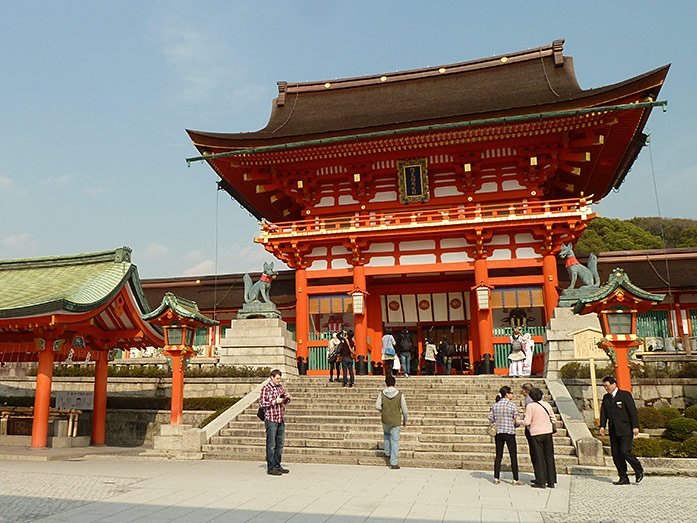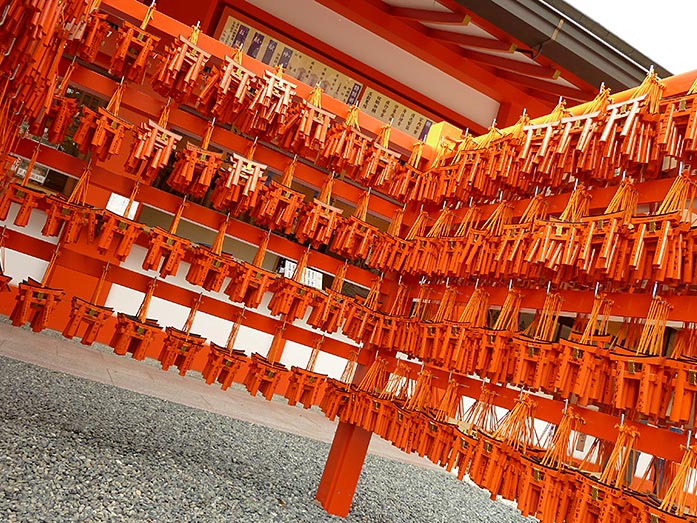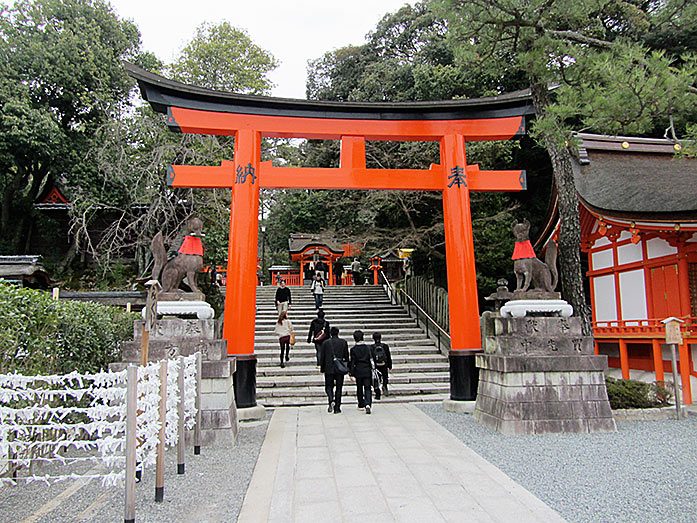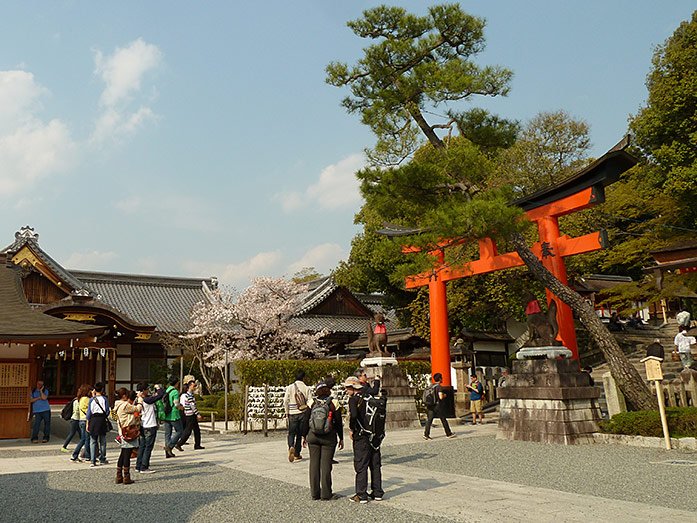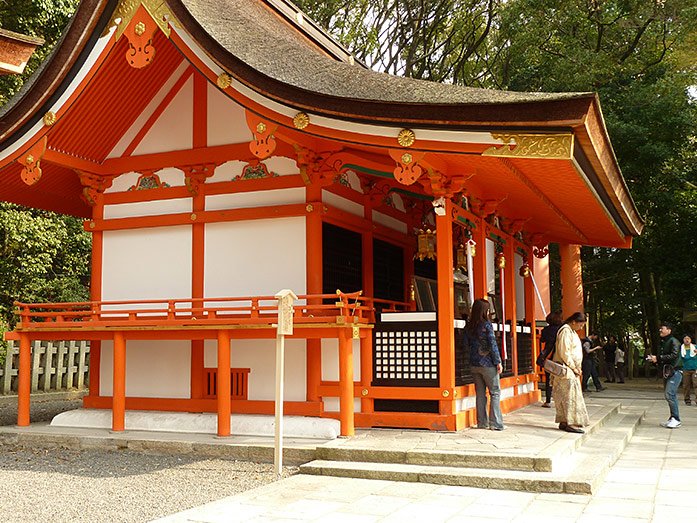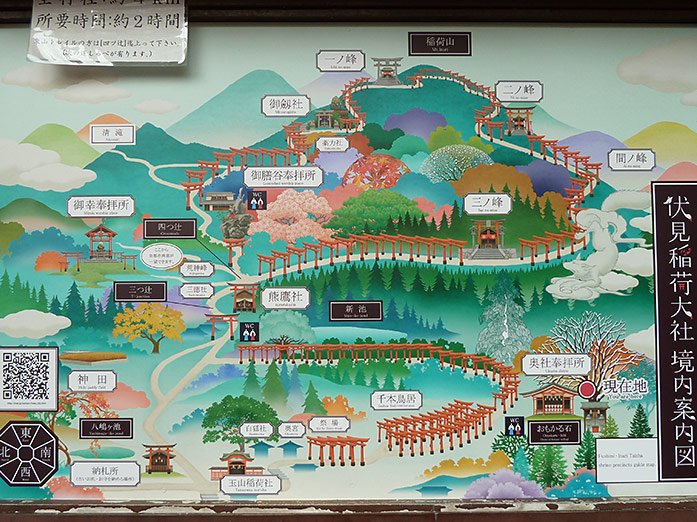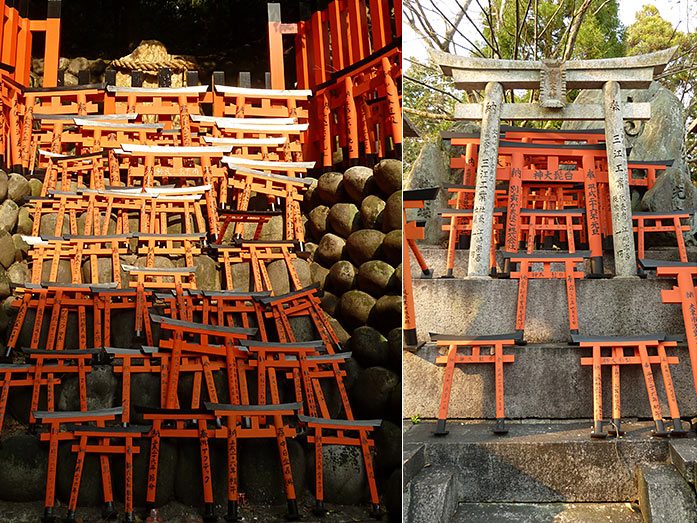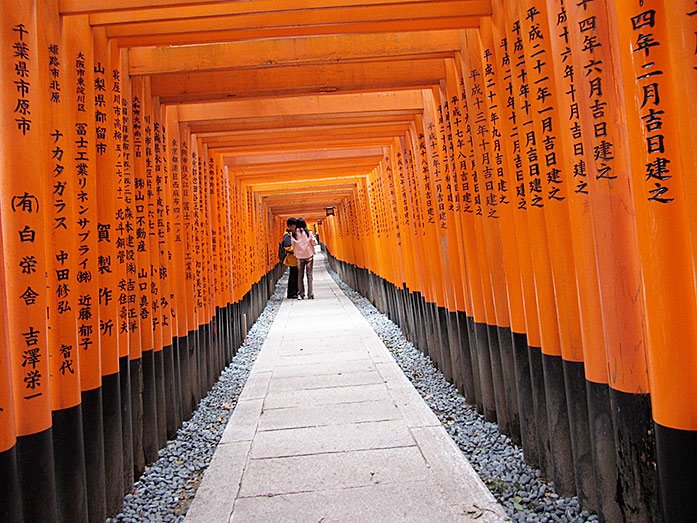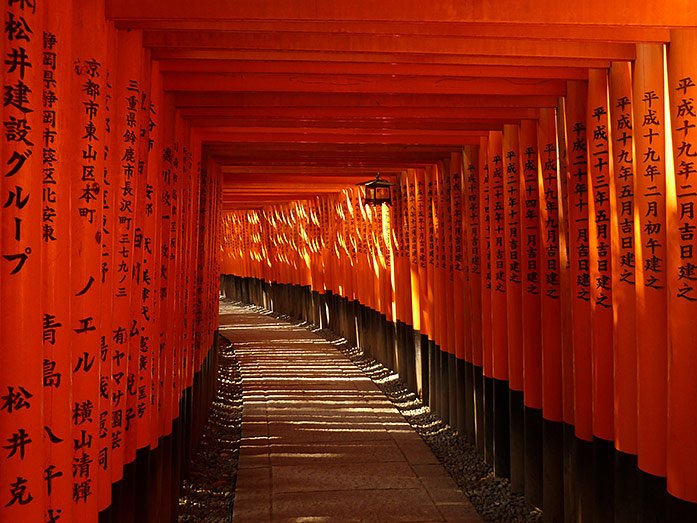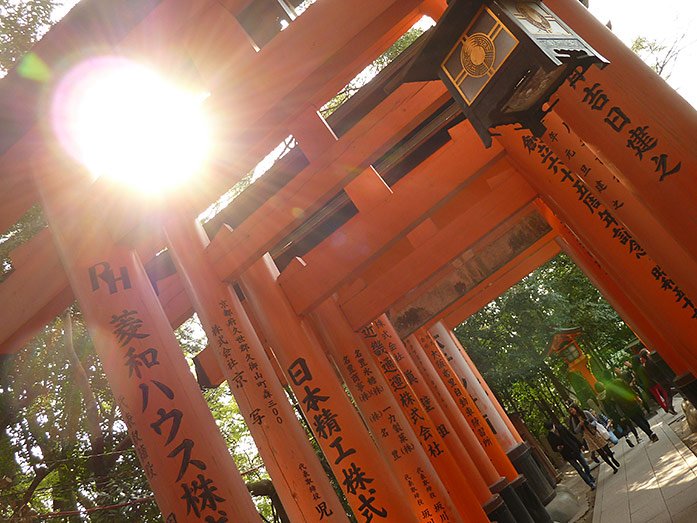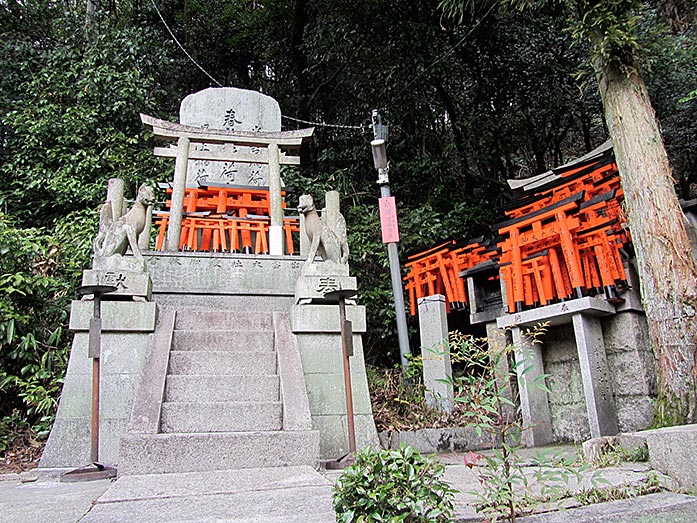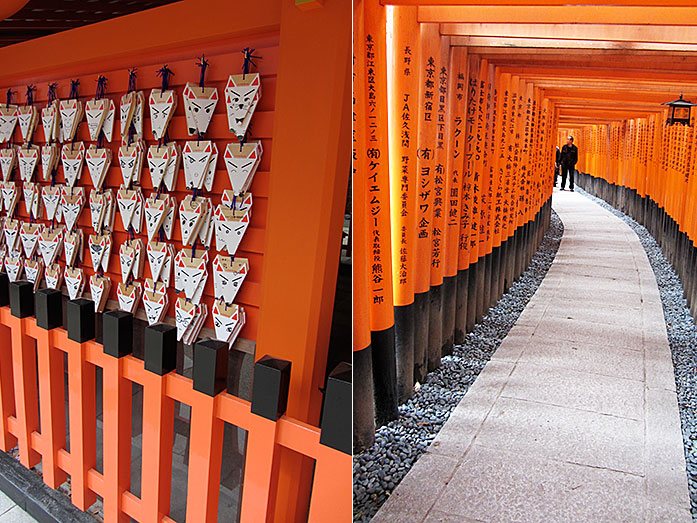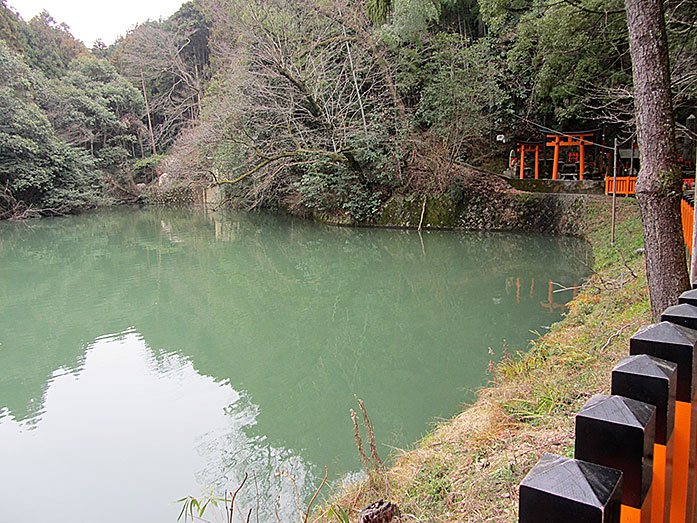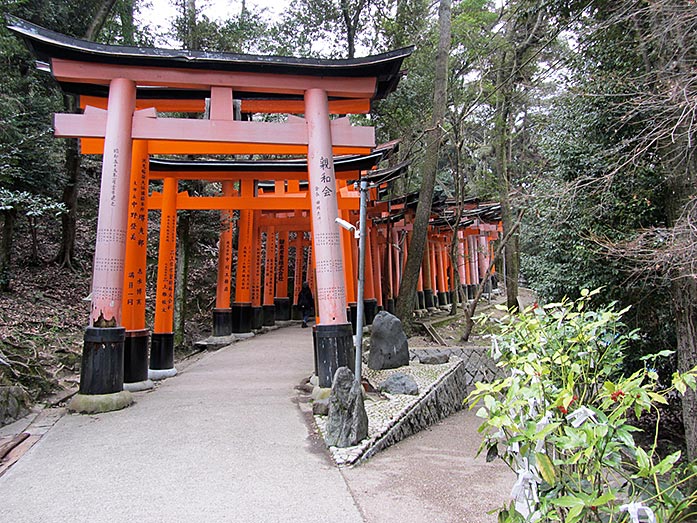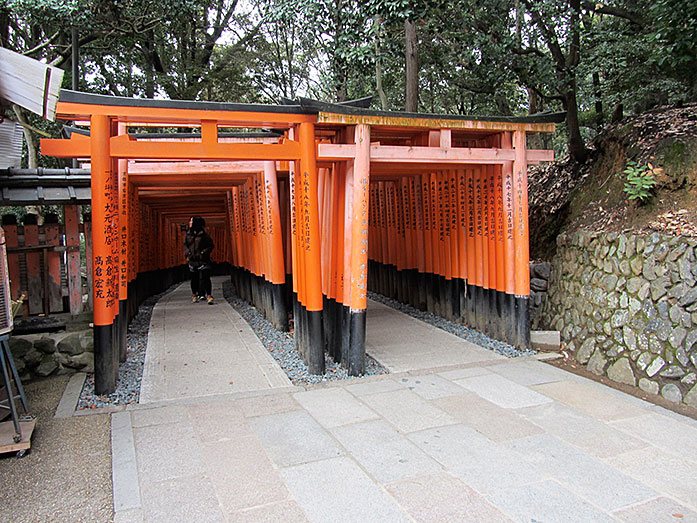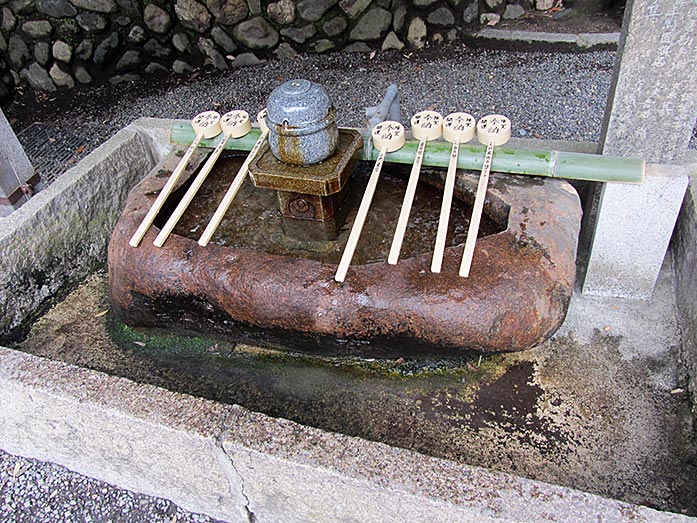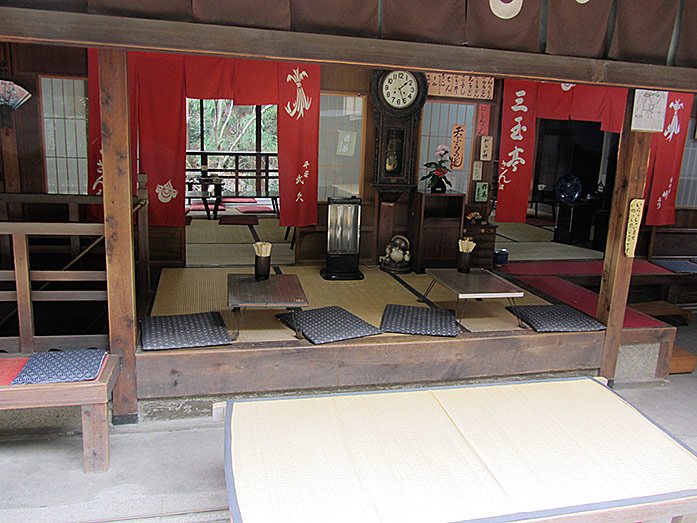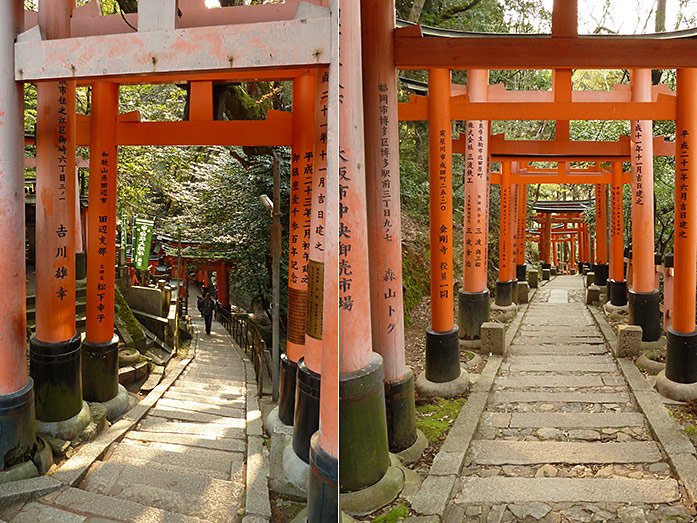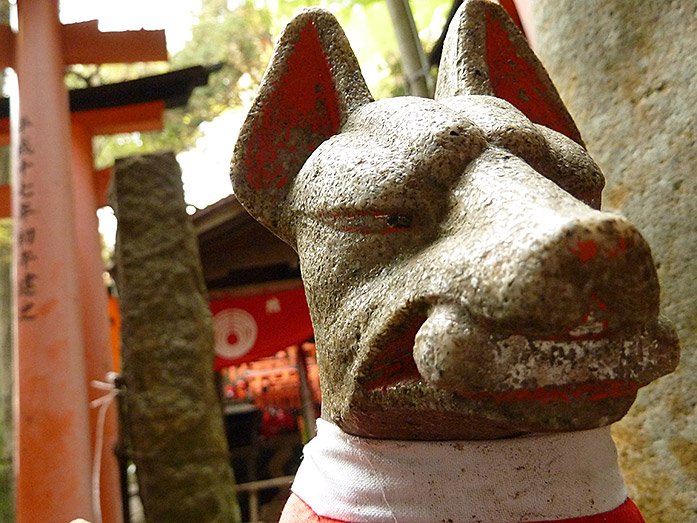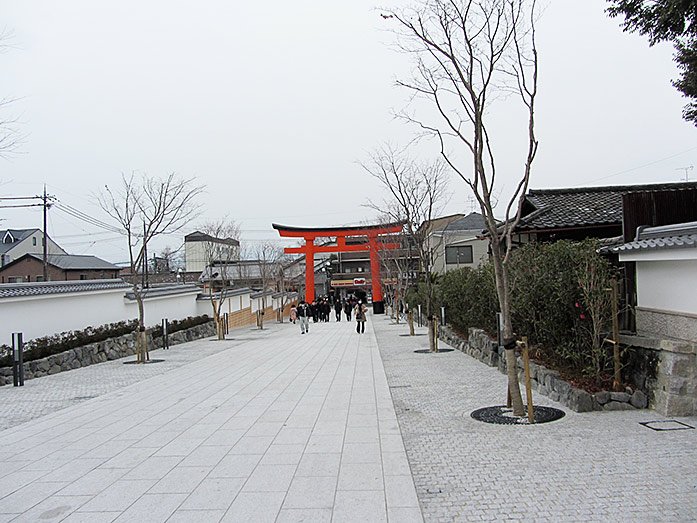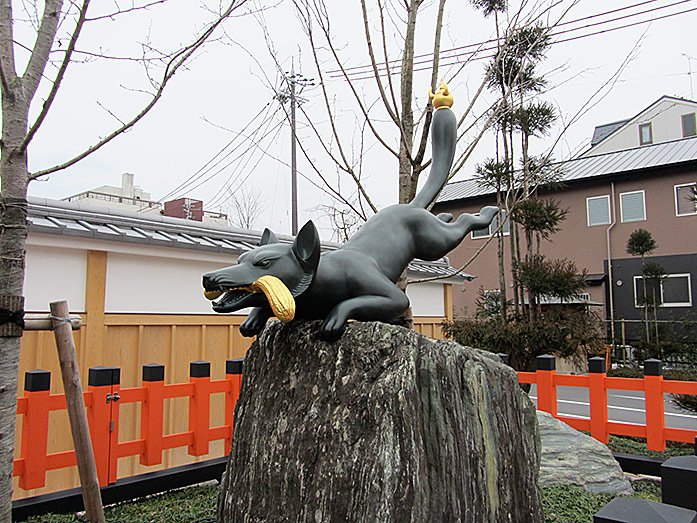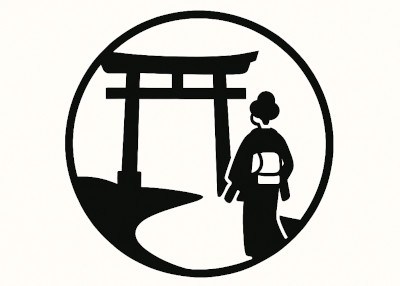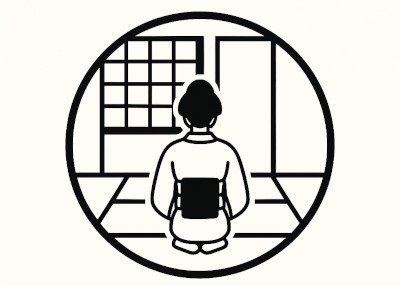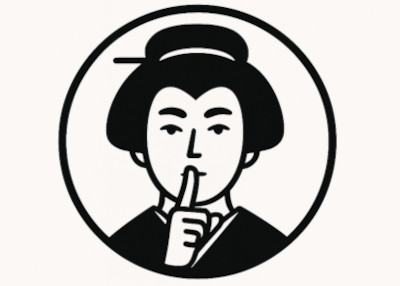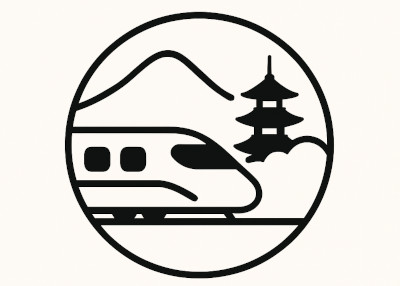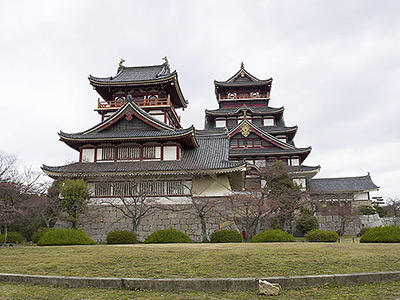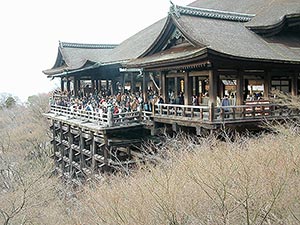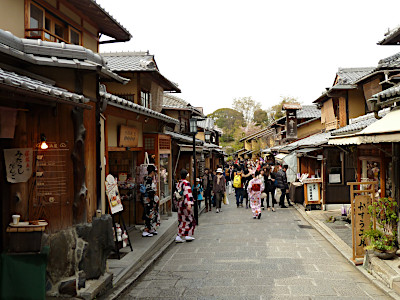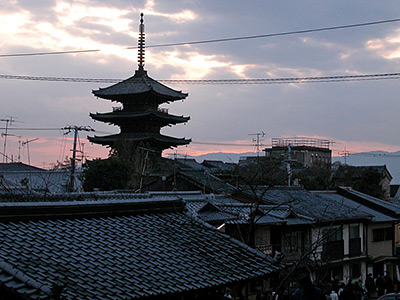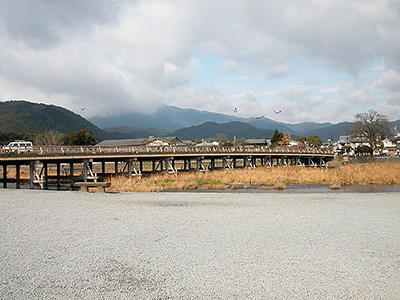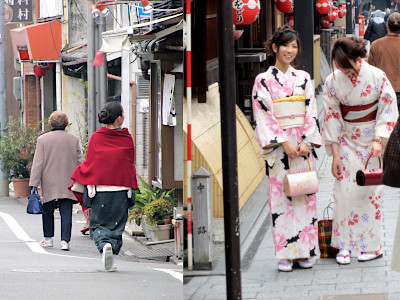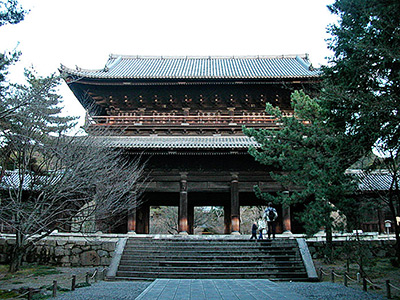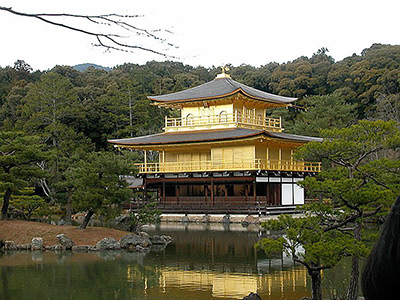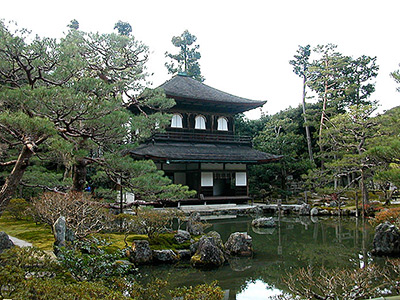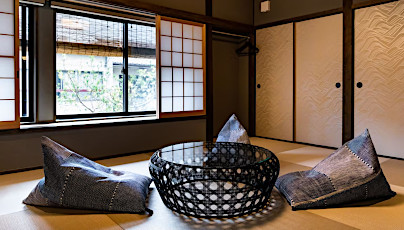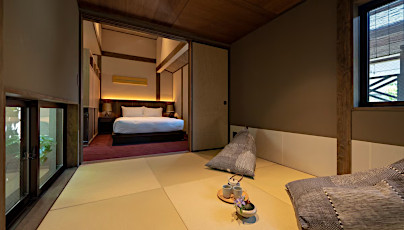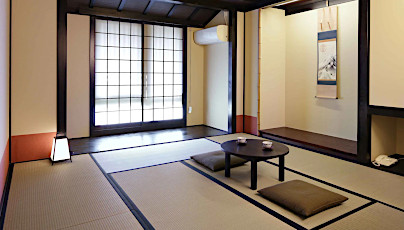Fushimi Inari-Taisha in Kyoto
This post can contain affiliate links, which means that we may receive a small commission if you make a purchase using these links.
Facts & Figures
Fushimi Inari Taisha (Fushimi Inari Shrine) is one of the most popular, well-known, impressive, and memorable Shinto shrines in all of Kyoto. The shrine is famous for its endless arcades of thousands of vermilion torii gates along the 4km pathway up the sacred mountain Inari (233 meters). The pathway connects the main shrine with the inner shrine. Do not miss the great view over the city from the top of Inariyama.
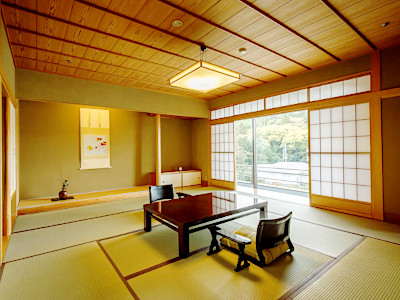 Best Places to Stay in Kyoto >
The head shrine of Inari represents approx. 40000 Inari shrines throughout Japan. The shrine was dedicated to the gods of rice and sake and as the patron of prosperity in business. Btw each of the vermilion torii gates was a donation by individuals and companies. This tradition started during the Edo period (1603 - 1868). If you are interested in donating it will cost you "only" 1 million yen for such a gate. Many fox statues (kitsune), altars, and fountains are visible all over the shrine complex. Foxes are considered Inari's messengers of the gods (deities) with magical powers. If you look closely some of the foxes holding a key in their mouths. These are symbols of the keys for rice granaries (storehouses), which they have to protect.
Best Places to Stay in Kyoto >
The head shrine of Inari represents approx. 40000 Inari shrines throughout Japan. The shrine was dedicated to the gods of rice and sake and as the patron of prosperity in business. Btw each of the vermilion torii gates was a donation by individuals and companies. This tradition started during the Edo period (1603 - 1868). If you are interested in donating it will cost you "only" 1 million yen for such a gate. Many fox statues (kitsune), altars, and fountains are visible all over the shrine complex. Foxes are considered Inari's messengers of the gods (deities) with magical powers. If you look closely some of the foxes holding a key in their mouths. These are symbols of the keys for rice granaries (storehouses), which they have to protect.
- Fushimi Inari-Taisha:
- Opening Hours - whole year, 24 hours/day
- Admission Fee - free
History
Fushimi Inari Taisha is one of the oldest Shinto shrines in Kyoto. Founded by the Hata family (Hata-no-Irogu) in 711. The enshrined deity of Fushimi Inari Taisha is called Inari Okami. During the Heian Period (794 - 1185) in 942 Fushimi Inari Taisha was promoted to the highest rank for Shinto shrines. The main shrine building (Honden) that you see today was constructed in 1499. Between 1871 and 1946 the shrine was one of government-supported shrines (Kanpei-taisha). Since 1909 Fushimi Inari Taisha has been designated as an Important Cultural Property by the Japanese government. In 2011 the 1300th anniversary of its establishment was celebrated.
Location

Fushimi Inari Taisha is located in Fushimi-ku (ward) in Kyoto. It takes only a 5min train ride from Kyoto Station.
Address: 68 Fukakusa, Yabunouchi-cho, Fushimi-ku, Kyoto 612-0882
How to get to Fushimi Inari Shrine?
- 5min from Kyoto Station to JR Inari Station by JR Nara Line or
- 2min walk from Fushimi Inari Station along Keihan Main Line
Sightseeing spots within the Fushimi Inari Shrine complex
Top:
Romon Gate - The gate, an Important Cultural Property, was donated in 1589 by daimyo Toyotomi Hideyoshi (1536 - 1598), a famous politician and general of the Sengoku period (1467 – 1615).
Honden - The main shrine building has the status of an Important Cultural Property. Honden was destroyed during the Onin War in 1468. The current structure dates back to 1499. In total, there are Five deities enshrined. The architectural style is called Uchikoshi Nagashi-zukuri.
Senbon Torii ("thousands of torii gates") - A 4km hiking trail starts with two parallel rows of over 5000 vermillion (ake) red torii gates. It is now the most famous feature of the shrine and walking through it gives many people a strong spiritual experience.
Okuno-in - The prayer building is located at the end of Senbon Torii. It is also known under the name Okusha Hohaisho. Okuno-in was built in 1499. The current structure dates back to 1794.
Yotsutsuji intersection - Take a break on your hiking tour and enjoy the great view over Kyoto.
Inariyama (Mitsugamine) - After a longer hiking tour you will reach the top of the sacred Mt. Inari (233m above sea level). Take your time to enjoy the amazing view over Kyoto and the surrounding mountains. Inariyama consists of 3 peaks - Ichinomine (first and highest), Ninomine (second) and Sannomine (third). The deity Suehiro Okami is worshiped at Ichinomine. At Ninomine it is the deity Aoki Okami and at Sannomine the deity Shiragiku Okami.
Gozendani - The prayer area near the three peaks of Inariyama gets really crowded during the yearly Oyama-sai ceremony on the 5th of January.
Kiyotaki Falls - The waterfall is located near the Gozendani Hohaisho prayer area.
Teichoan - Take a break at the new rest area close to the Yashimagaike Pond. Teichoan was built in 2017. The Japanese architecture style is traditional and the cafe inside is worth a visit.
Festival & Events (dates can change without notice)
January
Hatsu-mode (New Year's first shrine visit) (first days in January)
Thousands of visitors come to the shrine to pray for good fortune and a successful year.
Oyama-sai Mountaintop Ceremony (5th)
Every year on the 5th of January a festival is held near the top of Inariyama. Sake will be offered to nakakumizake kuten (deity) during the ceremony.
February
Hatsu-uma Festival - First Day of the Horse (9th)
It is the largest festival of the year at the Fushimi Inari Shrine. It is dedicated to the fox deity Inari. A lot of rice cakes will be made during the festival and served to the visitors. People come here to pray for good luck for the year.
April
Sangyo-sai festival (lit. "Industry Festival") (8th)
This festival at the Fushimi Inari Shrine has the aim to ensure the prosperity of the nation's industry. On that day dances are performed and offerings are given in large quantities.
Inari-sai, Shinko-sai (20th)
Inari-sai is the most important shrine festival of the year. Portable Inari shrines are carried to the Shinto shrine area to receive blessings from the priest.
May
Aoi Matsuri (15th)
The highlight of this festival is a large parade from the Imperial Palace through the Shimogamo Shrine to the Kamigamo Shrine. More than 500 people wearing aristocratic costumes from the Heian Period (794 - 1185). The Aoi Matsuri belongs with the Gion Matsuri and Jidai Matsuri as the three most famous festivals in Kyoto.
July
Gion Matsuri (whole month)
The month of July is full of different events like the Yoiyama - Kyoto's Magical Night (locals in kimonos look at the giant Gion floats the day before the parade) or the famous Yamaboko Junko (float procession on the 17th of July).
October
Jidai Matsuri ("Festival of Ages") (22nd)
People celebrate with a large parade between Imperial Palace to Heian Shrine the anniversary of the foundation of Kyoto. App. 2000 participants wearing historical costumes from different time periods. Enjoy this great festival which lasts around 2 hours.
Nukiho Matsuri (rice harvest festival) (25th)
The ritual of rice harvesting is performed at Fushimi Inari Taisha by women wearing traditional Shinto dresses accompanied by sacred dances.
November
Hitaki-sai Festival (Fire festival) (8th)
During the festival at Fushimi Inari bundles of prayer sticks with written wishes from worshippers will be set on fire. These holy bonfires will then destroy the sins of people and grant wishes for good health and prosperity. Roughly 100000 prayer sticks will be burned during this event. are sent from worshippers in every region of Japan wishing for their good health and prosperity.
Where to stay in Kyoto?
Book your Flight Tickets and Rental Car for your Japan trip
Day trips from Kyoto:
Travelers who viewed Fushimi Inari Taisha viewed also:
Top rated - Best Machiya Houses in Kyoto
THE MACHIYA Ebisuya, 192 Ebisuya-cho Shimogyo-ku, Kyoto 600-8062
This 3-star guesthouse got an excellent rating. All 30 individually furnished rooms offer free WiFi, air conditioning, bathrooms incl. toilets, fridges, 40-inch flat-screen TVs, and more. THE MACHIYA Ebisuya is located in central Kyoto.
View on Expedia.com
This 3-star guesthouse got an excellent rating. All 30 individually furnished rooms offer free WiFi, air conditioning, bathrooms incl. toilets, fridges, 40-inch flat-screen TVs, and more. THE MACHIYA Ebisuya is located in central Kyoto.
View on Expedia.com
The Machiya Kazahaya, 570-6 Kazahayacho, Shimogyo-ku, Kyoto, Kyoto, 600-8475
The Machiya Kazahaya offers for all guest rooms free WiFi, air conditioning, safes, bathrooms with toilets, refrigerators, and much more. Enjoy also the beautiful Japanese Garden. Guests gave this property the rating - Exceptional.
View on Expedia.com
The Machiya Kazahaya offers for all guest rooms free WiFi, air conditioning, safes, bathrooms with toilets, refrigerators, and much more. Enjoy also the beautiful Japanese Garden. Guests gave this property the rating - Exceptional.
View on Expedia.com
Kyomachiya Ryokan Sakura Urushitei, 425 Kichimonjicho, Shimogyo-ku, Kyoto, 600-8069
This beautiful 3-star guesthouse offers 32 rooms with free WiFi, air conditioning, bathrooms incl. showers and toilets, refrigerators, and much more. Enjoy also the relaxing indoor public bath (no minerals). Guests gave this property the rating - Wonderful.
View on Expedia.com
This beautiful 3-star guesthouse offers 32 rooms with free WiFi, air conditioning, bathrooms incl. showers and toilets, refrigerators, and much more. Enjoy also the relaxing indoor public bath (no minerals). Guests gave this property the rating - Wonderful.
View on Expedia.com

